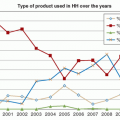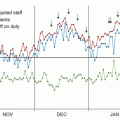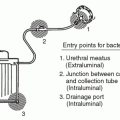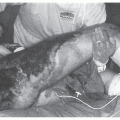Organization Type |
Website |
Description |
QUALITY |
Agency for Healthcare Research and Quality (AHRQ) |
http://www.ahrq.gov |
Quality and patient safety guidelines and literature |
The American Health Quality Association |
http://www.ahqa.org/pub/inside |
Reference documents for quality |
American Society for Quality (ASQ) |
http://asq.org |
Reference documents for quality |
CDC Division of Healthcare Quality Promotion (DHQP) |
http://www.cdc.gov/ncezid/dhqp/index.html |
Guidelines and associated recommended measures |
Hospital Compare |
http://hospitalcompare.hhs.gov/ |
Public comparison of mortality rates for various conditions abstracted from administrative data sets |
Institute for Healthcare Improvement (IHI) |
http://www.ihi.org |
Guidance documents for implementing evidence-based practices |
Institute of Medicine (IOM) |
http://www.iom.edu |
Healthcare-related publications, including medical errors and national quality progress |
The Leapfrog Group |
http://www.leapfroggroup.org |
Publicly reported quality and patient safety measures |
National Association for Healthcare Quality (NAHQ) |
http://www.nahq.org |
Reference documents for quality |
National Committee for Quality Assurance (NCQA) |
http://www.ncqa.org |
Quality standards for health plans |
National Initiative for Children’s Healthcare Quality (NICHQ) |
http://www.nichq.org |
Quality measures specific to children |
National Quality Forum (NQF) |
http://www.qualityforum.org |
National voluntary consensus measures for a variety of conditions, including HAIs |
INFECTION PREVENTION AND CONTROL |
Association for Professionals in Infection Control and Epidemiology, Inc. (APIC) |
http://www.apic.org |
Resources for infection prevention and control (IPC) and healthcare epidemiology (HE), including guidelines |
Center for Infectious Disease Research & Policy-University of Minnesota |
http://www.cidrap.umn.edu |
Resources for IPC and HE, including guidelines |
Centers for Disease Control and Prevention (CDC) |
http://www.cdc.gov |
Resources for IPC and HE, including guidelines |
Infectious Diseases Society of America (IDSA) |
http://www.idsociety.org |
Resources for IPC and HE, including guidelines |
National Foundation for Infectious Diseases (NFID) |
http://www.nfid.org |
Resources for infectious diseases |
The Society for Healthcare Epidemiology of America (SHEA) |
http://www.shea-online.org |
Resources for IPC and HE, including guidelines |
World Health Organization (WHO) |
http://www.who.int/en |
Resources for IPC and HE and current data on outbreaks |
PATIENT SAFETY |
Agency for Healthcare Research and Quality (AHRQ) |
http://www.ahrq.gov |
Quality and patient safety information; patient safety network |
American Hospital Association (AHA) |
http://www.aha.org |
Resources for hospitals |
American Society for Healthcare Risk Management (ASH RM) |
http://www.ashrm.org |
Resources for risk management |
American Society of Health-System Pharmacists (ASHP) |
http://www.ashp.org/patient-safety/index.cfm |
Resources for patient safety related to medication |
Anesthesia Patient Safety Foundation (APSF) |
http://www.apsf.org/ |
Resources for patient safety related to anesthesia |
ECRI Institute (formerly the Emergency Care Research Institute) |
http://www.ecri.org |
Resources for patient safety |
Emergency Medicine Patient Safety Foundation (EMPSF) |
http://www.empsf.org |
Resources related to emergency medicine |
National Institutes of Health; U.S. National Library of Medicine |
http://www.nlm.nih.gov |
PubMed, MeSH, ClinicalTrials.gov, MedLine Plus, and other sites for patient safety literature |
National Patient Safety Agency (NPSA), United Kingdom |
http://www.npsa.nhs.uk |
International resources for patient safety |
National Patient Safety Foundation (NPSF) |
http://www.npsf.org |
Resources for patient safety |
National Quality Forum (NQF) |
http://www.qualityforum.org/ |
Measures_List.aspx |
National voluntary measures for a variety of medical conditions Partnership for Patient Safety |
http://www.p4ps.org |
Resources for patient safety |
Patient Safety Institute |
http://www.ptsafety.org |
Resources for patient safety |
Premier Safety Institute |
http://www.premierinc.com/safety/ |
Resources on patient and healthcare worker safety topics |
U.S. Department of Defense Patient Safety Program |
http://health.mil/dodpatientsafety/ProductsandServices/Toolkits.aspx |
Resources for patient safety |
Veterans Administration National Center for Patient Safety (NCPS) |
http://www.patientsafety.gov |
Resources for patient safety |
REGULATORY |
Centers for Medicare & Medicaid Services (CMS) |
http://www.cms.gov |
Conditions of Participation for inclusion in Medicare and Medicaid programs; website publicly displays quality comparative data for hospitals |
National Fire Protection Association (NFPA) |
http://www.nfpa.org/index.asp |
Sets codes/regulations to reduce fire hazards |
The CDC’s National Institute for Occupational Safety and Health (NIOSH) |
http://www.cdc.gov/niosh |
Conducts research and makes recommendations regarding prevention of healthcare personnel injuries |
U.S. Occupational Safety & Health Administration (OSHA) |
http://www.osha.gov |
Regulates the health of healthcare personnel, including blood-borne pathogens and respirator use |
U. S. Department of Transportation |
http://www.dot.gov |
Regulates transportation in the United States, including medical waste |
U.S. Environmental Protection Agency (EPA) |
http://www.epa.gov |
Regulates air and water discharges and disinfectants used on surfaces |
U.S. Food and Drug Administration (FDA) |
http://www.fda.gov |
Regulates single-use medical devices, antiseptics, and disinfectants used on medical devices |
U.S. Government Accountability Office (GAO) |
http://www.gao.gov |
Investigates how the US government spends money |
U.S. Nuclear Regulatory Commission |
http://www.nrc.gov |
Regulates nuclear devices and materials used in laboratories and patient testing |
U.S. Regulations |
http://www.regulations.gov |
Searchable site of all US regulations |
ACCREDITATION |
American Osteopathic Association (AOA) |
http://www.osteopathic.org |
Professional organization for osteopathic physicians; alternative to The Joint Commission for deemed status |
Det Norske Veritas (DNV) Healthcare |
http://www.dnvusa.com/ |
Standards based on the International Organization for Standardization |
The Joint Commission |
http://www.jointcommission.org |
Standards for hospitals, critical access hospitals, long-term care, ambulatory care, behavioral healthcare, home care, laboratories, office-based surgery, and other settings |
Joint Commission International |
http://jointcommissioninternational.org |
Standards for international organizations, including hospitals, ambulatory care, care continuum, clinical laboratories, home care, long-term care, medical transport, primary care centers |
CONSUMER |
Americans Mad and Angry |
http://www.americansmadandangry.org |
Consumer stories regarding medical errors, including HAIs |
Committee to Reduce Infection Deaths (RID) |
http://www.hospitalinfection.org |
Consumer stories regarding HAIs |
Consumers Advancing Patient Safety (CAPS) |
http://patientsafety.org |
Tips for consumers |
Consumers Union |
http://www.consumersunion.org |
Campaign to require public reporting of HAIs |
Federation of State Medical Boards |
http://www.docinfo.org |
Quality information on doctors |
Healthgrades |
http://www.healthgrades.com |
Ratings for doctors, dentists, hospitals |
Public Citizen |
http://www.citizen.org/Page.aspx?pid=524 |
Information on physician accountability; drugs, devices, and supplements; and healthcare delivery |
OTHER RESOURCES |
Library of Congress |
http://www.loc.gov |
Research arm of Congress; largest library in the world, including US legislation |
U.S. Government Printing Office Federal Register |
http://www.gpo.gov/fdsys/browse/collection.action?collectionCode=FR |
Searchable site of agency regulations |








